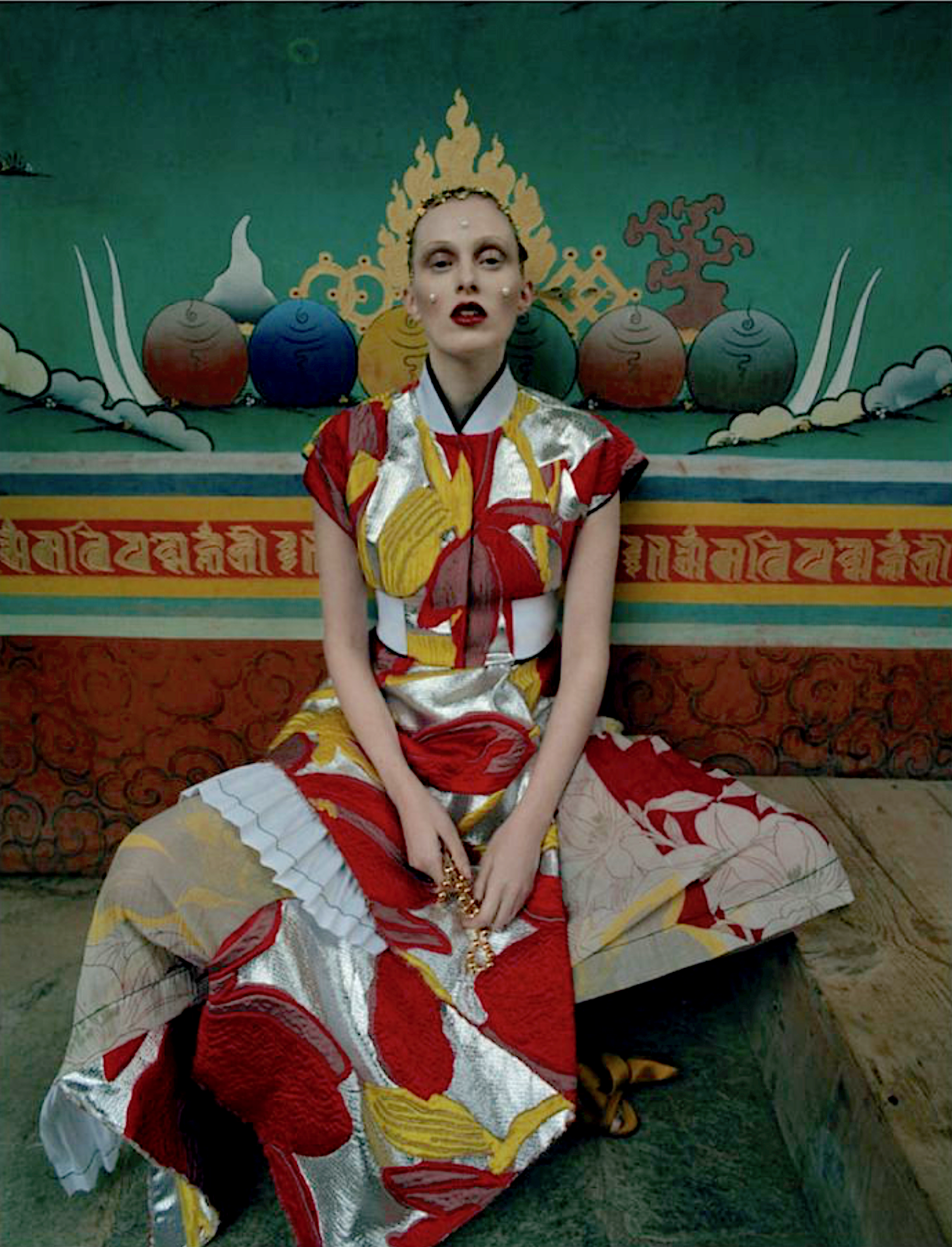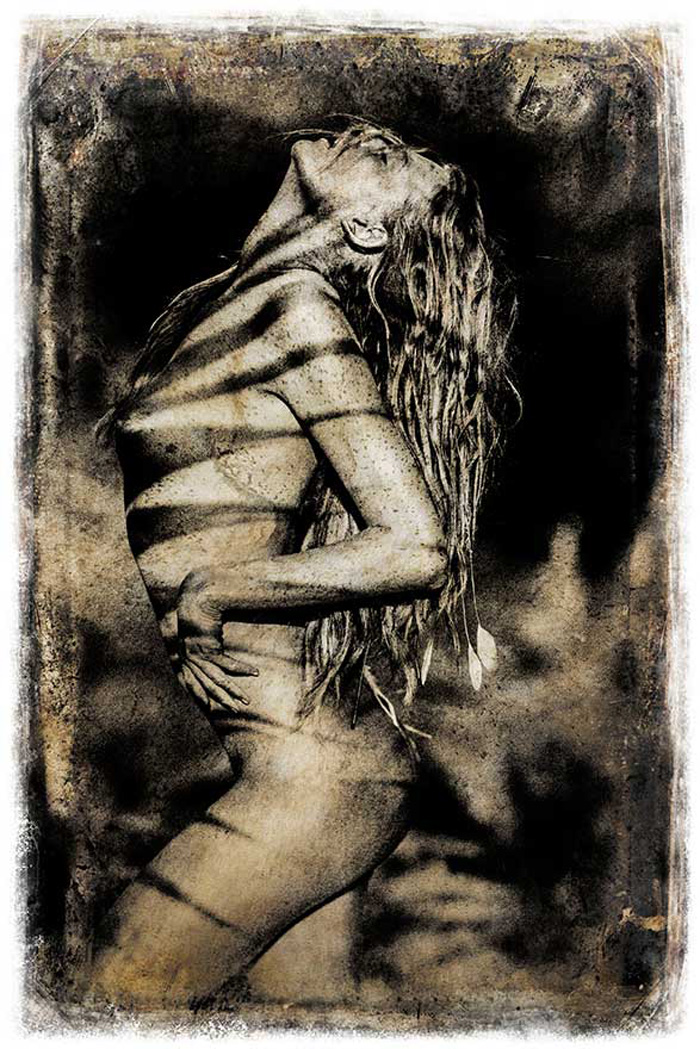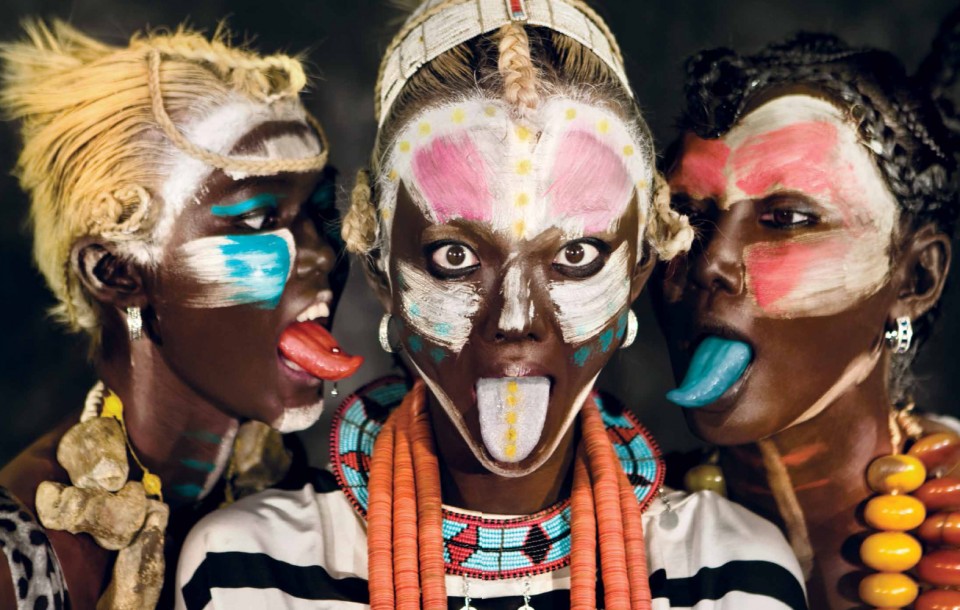Eye | Behati Prinsloo In 'Seminole Spirit' By Russell James Opens Feb 17 At NYC Stephan Weiss Gallery
/Behati Prinsloo In ‘Seminole Spirit’ By Russell James Opens Feb 17 At NYC Stephan Weiss Gallery
Apart from the photos of Prinsloo, the exhibit will also present a film featuring spoken word from the spiritual leader of the Seminole Tribe, a fine art photography exhibition from Bobby Henry that includes portraits of tribe members, and the tribe’s cultural sites and landscapes.
“Seminole Spirit is totally different than any type of normal shoot. This isn’t a project about fashion or trends, it is an art project with a really powerful story behind it,” Prinsloo says. “We were all so humbled to be in collaboration with the Seminole Tribe of Florida. […] This was definitely a project of passion for all of us with no shot count or designer label needed.”
Adds James, “I hope to engage people to look at this and understand this culture as not something that is gathering dust in the closet, but to realize that tribes and indigenous people are using culture to their great advantage, to maintain their identity.”
Anne adds:
Describing her experience with the Seminole people, Behati Prinsloo says: “We painted my body gold as we tried to capture an idea we had of what ‘Seminole Spirit’ is . . I felt like a savage swamp mermaid on Seminole land, crazy.”
In describing herself as a mermaid, Behati channels the key theme of female goddess history, establishing herself in the sisterhood of Mami Wati’s born in Africa before travelling the globe — often on the slave ships as a source of comfort and solace in brutal conditions.
AOC is dancing as fast as we can on this one, because ‘Seminole Spirit’ goes to the very essence of our identity and purpose. Lots more is coming. ~ Anne
Eye | Mami Wata Resurgence As Global Goddess | 55,000 Years-Old Female Skull Provides Critical Link In Human Evolution & Migration Out of Africa
/
Carmelita Mendes Is Beauty Goddess By Mari Queiroz For Amuse Magazine AOC GlamTribale
A Female Skull Closes Migration Link Out of Africa and Into The Levant
 Female Skull In Israel’s Manot Cave Links Humans & Neanderthals 55,000 Years Ago AOC GlamTribale
Female Skull In Israel’s Manot Cave Links Humans & Neanderthals 55,000 Years Ago AOC GlamTribale
In a series of coincidences that are peppered throughout my life, scientists have threaded another needle in the highly-probable story that human life originated in the region of Lake Turkana bordering Kenya and Ethiopia before migrating into a region known today as The Levant.
In a very real sense, today’s religious wars are going on in the very region that is the cradle of human civilization. My own relationship with The Levant area is most focused on studying the evolution of the goddesses and the rise of monotheism.
Kenya, Lake Turkana and the Omo Valley people of Ethiopia are a much stronger connection — one revealed through my inexplicable connections with the young photographer Dan Eldon. Here is a sampling of our journey.
Mami Wata Moves Into Anne of Carversville
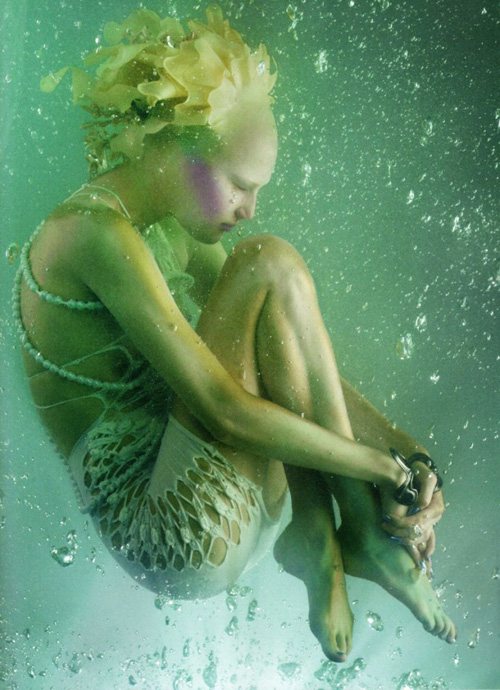 Aphrodite Joins Mami Wata For A Swim in Human Consciousness AOC Sensual Rebel Nov. 2009
Aphrodite Joins Mami Wata For A Swim in Human Consciousness AOC Sensual Rebel Nov. 2009
Men have always been ambivalent about mermaids, the mythological aquatic creature with a female human head and torso but the tail of a fish. In many ancient cultures, mermaids were regarded as semi-divine aspects of the Goddess.
Carl Jung’s theory of the feminine unconscious describes this oceanic-subterranean womb of creation as an unfathomable place of ancient wisdom but also fear.
The first known mermaid stories appeared in Assyria, ca. 1000 BC. The goddess Atargatis, mother of Assyrian queen Semiramis, loved a mortal shepherd and unintentionally killed him.
Distraught and ashamed, Atargatis jumped into a lake to take the form of a fish, but the waters would not conceal her divine beauty. Thereafter, she took the form of a mermaid—human above the waist, fish below—though the earliest representations of Atargatis showed her as a fish with a human head and legs, similar to the Babylonian Ea. The Greeks recognized Atargatis under the name Derketo.
Prior to 546 BC, the Milesian philosopher Anaximander proposed that mankind had sprung from an aquatic species of animal. The scientist and highly-regarded critical thinker thought that humans, with their extended infancy, could not have survived otherwise.
Mami Wata Resurgence In South Africa
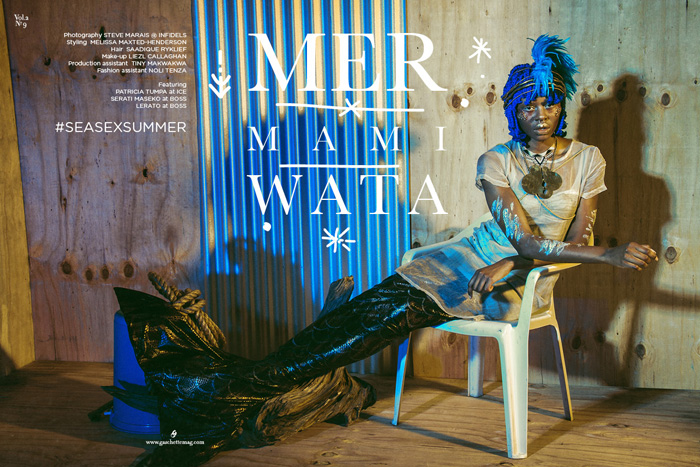 Steve Marais Celebrates African & Global Goddess Mami Wata As Mermaid In Gaschette Magazine AOC Salon
Steve Marais Celebrates African & Global Goddess Mami Wata As Mermaid In Gaschette Magazine AOC Salon
More reading:
South African Photographer Koto Bolofo Intrigues Me With Numéro #160 'Atelier D'Artiste'
/Aneta Pajak In Atelier D’Artiste By Koto Bolofo For Numéro #160 February 2015
Visual cues run wild in these images: is Aneta exploring a gender-neutral, artistic studio or is she in the fashion-predictable studio of a male artist? Is she the prototypical muse of the male mind? What is the significance of a large — presumably male — hand at her throat and in her face? How has this male artistic vision — and the powerful art world institutions behind it — defined Aneta and millions — no billions — of female identities worldwide and for the last 3000 years?
There are no answers in ‘Atelier D’Artiste’, a Numéro #160 February 2015 fashion editorial that may be nothing more than a celebration of the male mind and fashion’s support for traditional gender-based power relationships. This isn’t how these images strike me, however.
Do I share a vibe with photographer Koto Bolofo? Rest assured that I will answer that question for myself and AOC readers. ~ Anne
Anais Mali Pays Tribute To Warrior Women In 'Amazon' By Urivaldo Lopes for French Revue De Modes #25
/Anais Mali Pays Tribute To Warrior Women In ‘Amazon’ By Urivaldo Lopes for French Revue De Modes #25
In Greek mythology, the Amazons were fierce female warriors who descended from Ares, the god of war. Amazonian women are frequently pictured fighting on horseback with bows and arrows, axes and spears. Frequently Amazons carry a crescent-shaped shield. As patriarchal values soared in Greece and especially under Aristotle, the Amazons were portrayed as man-hating women.
The Amazon River in South America is believed to have been named by the Spanish explorer Fransisco de Orellana in 1541 who encountered female warriors on his voyage through a territory then called Maranon.

